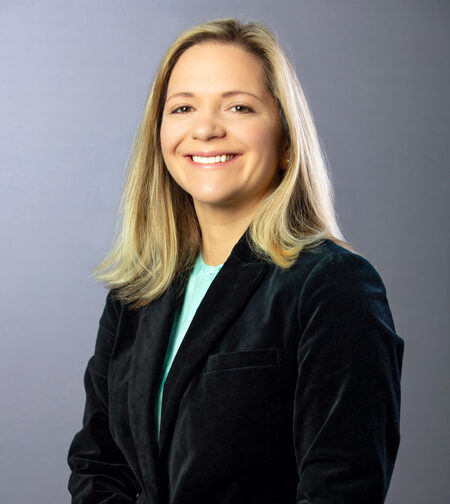
Star lighter
The alum who sparked the biggest fusion breakthrough in decades

The alum who sparked the biggest fusion breakthrough in decades
If you didn’t meet Andrea (Annie) Kritcher (BSE NERS ’05) while she was a student at U-M, you may know her from the news; TIME magazine named her one of the 100 most influential people of 2023.
On December 5, 2022, an experiment she led and designed at the National Ignition Facility (NIF) achieved the world’s first fusion ignition—a milestone in which the energy emitted by fusion reactions is more than the energy used to compress the fuel.
Kritcher’s accomplishment, an advance that scientists had been chasing for some 60 years, was hailed by U.S. Department of Energy Secretary Jennifer Granholm as “one of the most impressive scientific feats of the 21st century.”

“We have been trying to make miniature suns in the lab. A lot of the journey has been, how do we get this to ignite?” said Kritcher. “Unless you get enough energy to the star, and do it just right, it won’t ignite.”
Achieving ignition at the NIF is a complicated dance that starts with 192 lasers, all pointing toward a target containing a fuel pellet that is more perfectly round than the Earth. The light rapidly heats a metal cylinder that then emits a three-million-degree X-ray “bath,” which surrounds the fuel pellet. If they get it just right, those X-rays vaporize the shell of the pellet, driving the fuel inward so that the atoms fuse together and release more energy than hit the metal cylinder.
The December 2022 experiment was far from Kritcher’s first shot. She’d been building toward it for years, learning from her own research as well as that of others. A previous milestone shot came in August of 2021, when Kritcher was working remotely from Minnesota, on vacation with her family. She was getting ready to walk down to Lake Minnetonka with her dad, an eye on her phone as the shot went off and the results came in.
Kritcher’s father, a retired sales representative, had always dreamed of developing world-changing technology. So he was thrilled when his daughter looked up from her phone and said, “I think we did it!”
This earlier shot achieved scientific ignition: The amount of energy released in the fusion reactions was more than the energy that had actually reached the fuel. But the NIF defines ignition by the amount of energy that hits the metal cylinder—a higher bar since a lot of energy is lost converting the laser light into the X-ray bath. Still, the fusion had become self-sustaining, if only for a moment.
In September 2022, Kritcher’s team tried again, upping the energy coming from the lasers and improving the target design. But this shot didn’t achieve the NIF’s definition of ignition—the results showed that the fuel hadn’t compressed evenly. Kritcher had to figure out how to adjust the output of each of those laser beams to achieve equal compression on all parts of the sphere.
“The only change to the setup going from the first to the second shot was essentially on my shoulders—I had to fix the symmetry,” she said. The December experiment proved her adjustments were successful.
Kritcher appreciates her new visibility and the power to inspire that it brings in a field where women still earn roughly 20% of physics degrees. She recalls a female mentor, whose persistent wearing of pink seemed bold and ostentatious when it would have been normal in another field. At the time, it was something Kritcher would not have done.
“Even now, in my position, I can feel like I don’t fit in. I don’t look like them, and I don’t share the same hobbies,” said Kritcher.
“But science is open to all.”